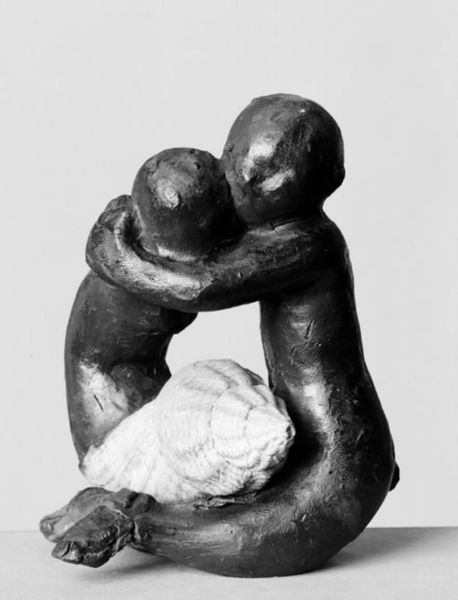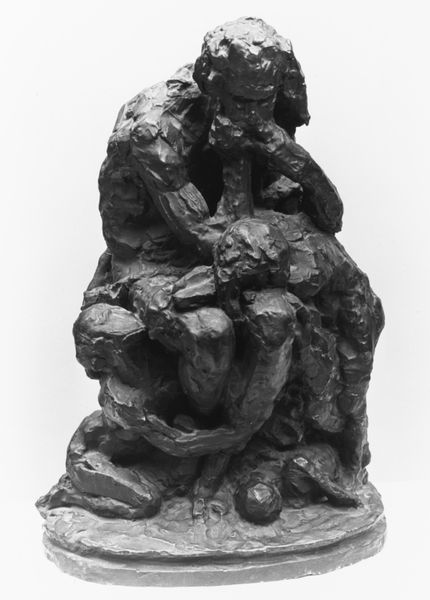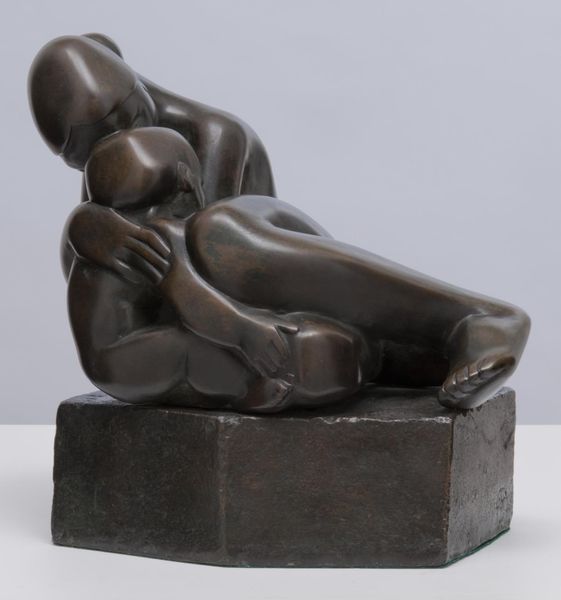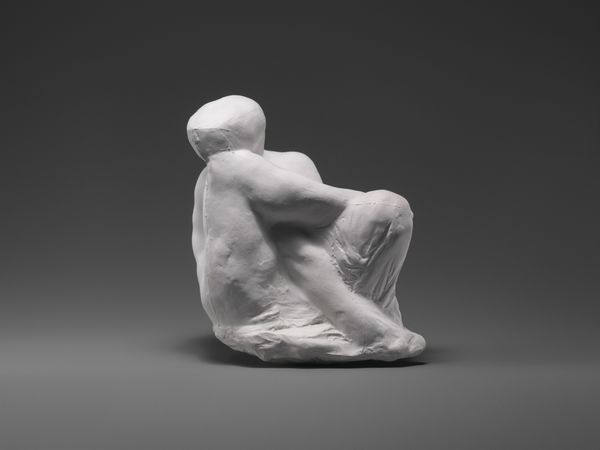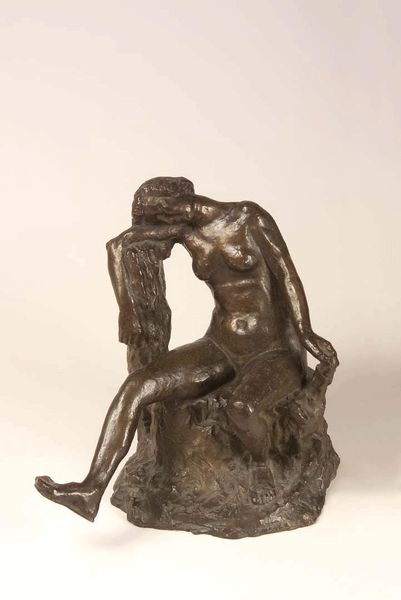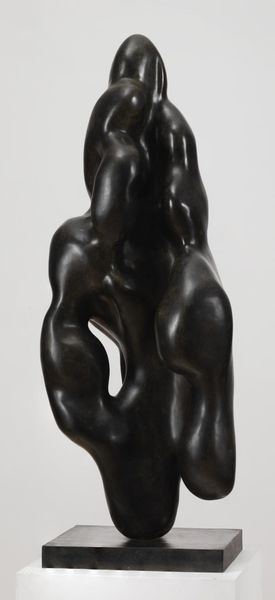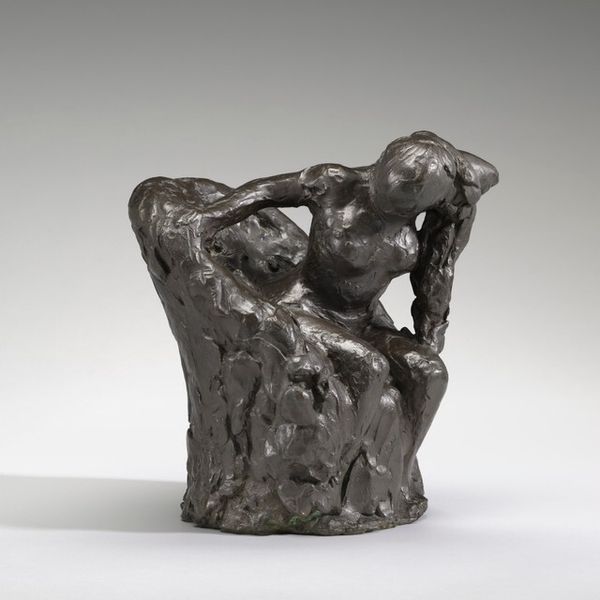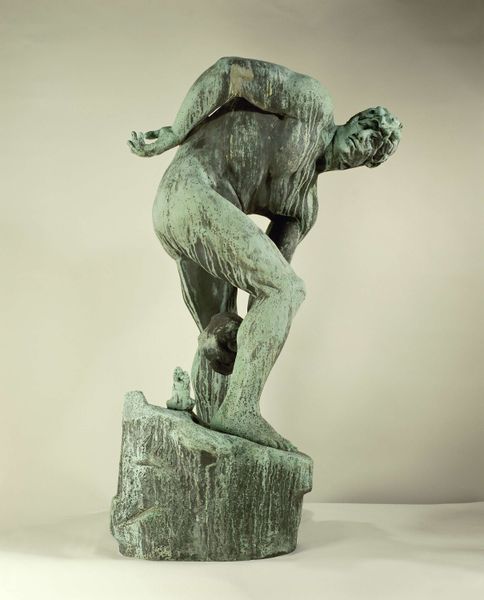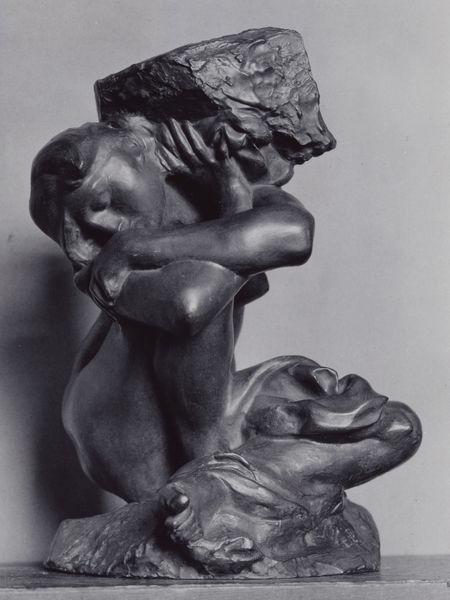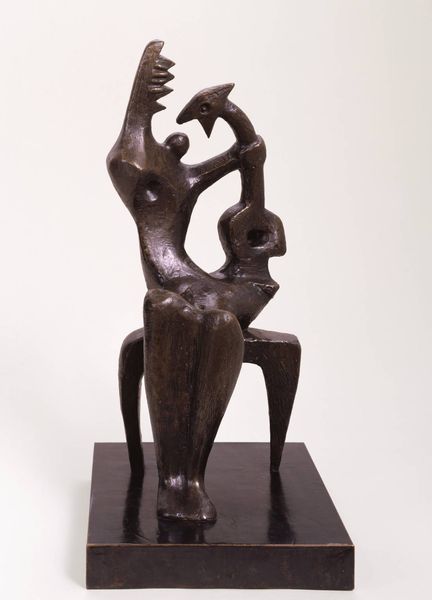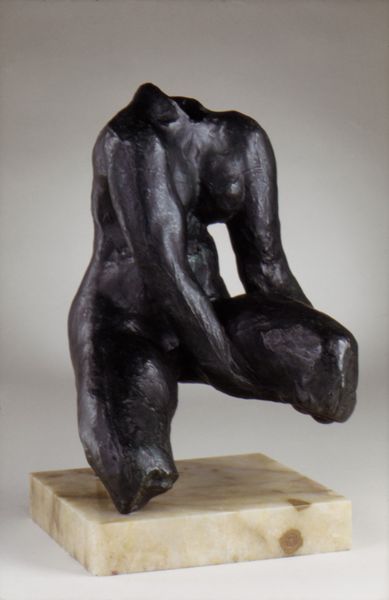
Dimensions: object: 768 x 559 x 324 mm, 150 kg
Copyright: © The estate of Frank Dobson | CC-BY-NC-ND 4.0 DEED, Photo: Tate
Editor: Here we have Frank Dobson's sculpture, The Man Child, carved from stone. The figures are simplified, almost blocky, but there’s a real tenderness in the mother’s embrace. How do you interpret the significance of the material and the process in conveying Dobson's message? Curator: The sheer mass and weight of the stone itself speaks to the labor involved, and the enduring nature of familial bonds. Dobson's choice of direct carving, rejecting the smoothness of earlier neoclassical styles, grounds the work. It’s an honest portrayal of the material’s resistance and the societal role of motherhood. Editor: So, it's not just about the image, but the act of creating it, the labor? Curator: Precisely. The sculpture prompts us to consider the means of production and the social context of its making. The raw, unpolished surface challenges our expectations of idealized motherhood, reflecting the realities of labor and care. It also suggests that Dobson isn't trying to create a "high art" object, but is speaking about the everyday reality of labor. Editor: That’s a fresh perspective! I see the work in a completely different light now.
Comments
tatebritain 6 months ago
⋮
http://www.tate.org.uk/art/artworks/dobson-the-man-child-t01322
Join the conversation
Join millions of artists and users on Artera today and experience the ultimate creative platform.
tatebritain 6 months ago
⋮
Dobson trained as both a painter and sculptor, but concentrated on sculpture after active service in the First World War. Like many of his contemporaries, he found inspiration for his work in the ethnographic collections of the British Museum. He particularly admired carvings from the Congo in Africa. Such interest in what had been considered ‘less civilised’ cultures became more widespread after the ‘sophisticated’ destruction of the war.Here, in the wake of conflict, Dobson returns to fundamental human relationships. The manchild of the title melds with two female figures who seem to embody maternal protection expressing both joy and fear for the new life. Gallery label, July 2007
